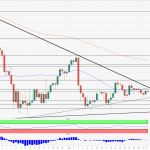After the ECB’s disappointment yesterday market nerves were shattered, but the largely as expected US jobs data may help the focus return to the underlying fundamental fact. The ECB just eased policy. Not as much as the market expected, and that speaks to market positioning, but it did ease. And the 211k increase in November jobs, with the October series being revised up 27k to 298k, Fed officials looking for more improvement in the labor market got it.

The unemployment rate was unchanged at 5.0%, and average hourly earnings rose 0.2%. The-year-over-year pace slowed to 2.3% as expected, which, while nothing to write home about, is still at the upper end of where it has been. Also of note the participation rate ticked up to 62.5 from 62.4. Less favorable, the under- employment rate rose to 9.9% from 9.8%. However, the trend is clearly lower, and it is the second month below 10% since 2008.
Canadian data were considerably worse. Instead of unwinding around a quarter of the 44.4k jobs created in October, nearly all were unwound as Canada reported a net loss of 35.7k jobs. It is a bit misleading. Canada created 36.6k full-time jobs, which is more than twice the average over the past twelve months, and lost 72.3k part-time positions. However, other details were also disappointing. The unemployment rate ticked up to 7.1% even though the participation rate fell to 65.8 from 66.0.
Both the US and Canada also reported October trade balances. Canada’s deficit was much larger than expected at C$2.76 bln (consensus was C$1.70) and the September balance was revised to show a deficit a third bigger at C$2.32 bln. The US deficit was also larger than expected at $43.89 bln, which is $3.3 bln more than expected, and the September shortfall was revised to $42.46 bln (from $40.81 bln). Economists may wait to see November’s report to revise GDP forecasts, but those tracking exercises will likely mark down Q4 GDP on the basis of today’s trade figures.














Leave A Comment